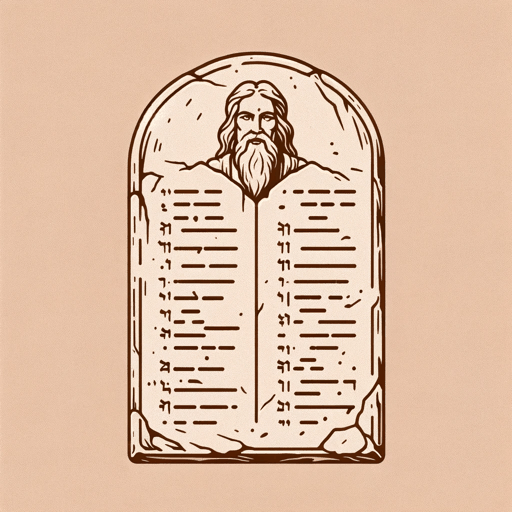72 pages • 2 hours read
AnonymousBible: New Testament: English Standard Version
Nonfiction | Scripture | Adult | Published in 1611A modern alternative to SparkNotes and CliffsNotes, SuperSummary offers high-quality Study Guides with detailed chapter summaries and analysis of major themes, characters, and more.
Summary and Study Guide
Overview
The New Testament is the second of two major sections of the Christian Bible, comprising a collection of 27 books that are attributed to writers from the first century CE, all written in ancient Greek. When combined with the 39 books of the Old Testament, they constitute the 66 books of the standard canon of Christian scripture (not counting deuterocanonical books). The books of the New Testament describe the life of Jesus of Nazareth and the development of the early Christian Church. They were written by a small group of authors who were directly connected to the first generation of Christian leaders, including some of Jesus’s own disciples (sometimes called apostles).
The New Testament books have been passed down through centuries of scribal copies, and the earliest and most complete manuscripts from these text traditions form the basis of modern translations. This study guide uses the English Standard Version (ESV) of 2016 from the publisher Crossway. Readers of this study guide can use any English translation according to their own preference, as all citations are given with the standard biblical reference system (designating book, chapter, and verse), a reference apparatus that is uniform across all English versions.
This study guide follows the New Testament pattern and traditional Christian usage by using male pronouns for God, but it is important to note that the Christian tradition regards God as Spirit (and so ungendered). As such, the pronouns for God in this guide ought not to be read as expressions of human sex but rather as indicating the relational analogies through which the biblical books portray God’s interactions with humanity.
Scripture quotations are from the ESV® Bible (The Holy Bible, English Standard Version®), copyright © 2001 by Crossway, a publishing ministry of Good News Publishers. ESV Text Edition: 2016. Used by permission. All rights reserved. The ESV text may not be quoted in any publication made available to the public by a Creative Commons license. The ESV may not be translated into any other language.
Summary
The New Testament is made up of three broad sections: first, the biographical and historical books, which give an account of Christianity’s roots in Jesus’s ministry and the rise of the early church; second, a collection of epistles (letters) written from apostolic leaders (disciples—though not necessarily from the group of 12 disciples—tasked with carrying Jesus’s message to others) to early Christian communities; and third, the Book of Revelation, an apocalyptic text that stands alone both in style and substance.
The New Testament opens with four gospels—Matthew, Mark, Luke, and John—each telling the story of Jesus’s life and ministry, ending with his death and resurrection. Jesus of Nazareth lived in the early decades of the first century (the precise dates are a subject of some debate), and the gospels give most of their attention to the three-year period of his public ministry around the year 30 CE. The four gospels differ from each other in matters of style and theological focus, but the broad outline of Jesus’s actions and identity are recognizably the same throughout. Jesus is presented as both the Messiah and the Son of God, with his identity demonstrated in his teaching, his miraculous deeds, and especially in his sacrificial death on the cross and resurrection from the dead. The gospels are followed by the Book of Acts, which recounts the early growth of the Christian movement as it spreads from Jerusalem to sites across the Roman Empire. Acts gives particular attention to Peter, the leader of Jesus’s 12 disciples, and to Paul, an apostolic missionary.
The epistles constitute the majority of the New Testament—21 of its 27 books—and they offer a robust picture of the social and theological issues being addressed by early Christian communities. Most of the epistles are attributed to Paul, who was a persecutor of Christians until his conversion following a personal encounter with Jesus. He became a missionary, establishing churches across Asia Minor (modern Turkey) and Greece, and he wrote letters to the churches and ministry leaders with whom he was in contact. Since a large part of Paul’s ministry was the communication of the Christian gospel (gospel in this sense meaning “good news”) to a new audience of Gentiles (i.e., non-Jews), his epistles are invaluable in providing a clear and concise articulation of the core of the Christian message in one of its earliest forms. The remaining epistles in the New Testament were written by other leaders within the first generation of Christians, including Peter (one of Jesus’s 12 disciples), James (a member of Jesus’s family), and John (another of the disciples). Among other matters, these epistles offer practical counsel on how to live as a Christian within the social context of the first-century Roman Empire.
The New Testament ends with the Book of Revelation, which consists of a series of visions received by the apostle John near the end of his life. These visions include messages for nearby churches, a description of the heavenly worship around the throne of God, and a series of symbolic events depicting the condition of the world leading up to the ultimate victory of Jesus and the day of judgment. Since Revelation is the final book in the biblical canon, it provides a bookend that corresponds to Genesis at the beginning of the Old Testament, together telling a story of God’s relationship with humanity from the beginning of history to the end.
Related Titles
By Anonymous

Arabian Nights
Anonymous

Arden of Faversham
Anonymous

A Woman in Berlin
Anonymous

Bible: Old Testament: English Standard Version
Anonymous

Deuteronomy
Anonymous

Diary of an Oxygen Thief
Anonymous

Do Not Stand at My Grave and Weep
Anonymous

Everyman
Anonymous

Hebrew Bible
Anonymous

Holy Bible
Anonymous

Homeric Hymns
Anonymous

Judith
Anonymous

Laxdaela Saga
Anonymous

Lazarillo De Tormes
Anonymous

Mahabharata
Anonymous

Nibelungenlied
Anonymous

Njals Saga
Anonymous

One Thousand and One Nights
Anonymous

Popol Vuh
Anonymous

Sir Gawain and the Green Knight
Anonymous

